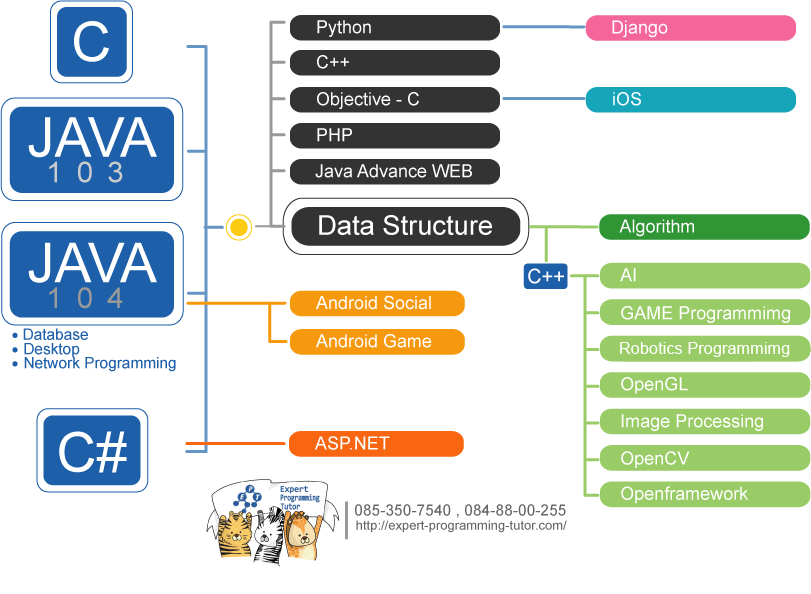ในโลกของการพัฒนาซอฟต์แวร์ การจัดการกับฐานข้อมูลเป็นสิ่งที่ไม่สามารถหลีกเลี่ยงได้ ในปัจจุบันนี้ NoSQL ได้กลายเป็นหนึ่งในประเภทของฐานข้อมูลที่ได้รับความนิยมอย่างมาก เนื่องจากสามารถจัดการกับข้อมูลที่มีโครงสร้างไม่ตายตัวและขนาดใหญ่ได้อย่างมีประสิทธิภาพ ซึ่งบทความนี้จะพาไปทำความรู้จักกับคำสั่ง db.collection.find() คำสั่งสำคัญในฐานข้อมูล NoSQL อย่าง MongoDB ที่มีบทบาทเป็นศูนย์กลางในการดึงข้อมูลจากฐานข้อมูลออกมาใช้งาน
ก่อนที่เราจะลงลึกในคำสั่ง find() มาทำความเข้าใจกันก่อนว่า ไม่ใช่ทุกโปรเจคที่ SQL แบบเดิมจะตอบโจทย์ การที่ข้อมูลมีความซับซ้อนมากและมีการเปลี่ยนแปลงตลอดเวลาเป็นสิ่งที่ทำให้ NoSQL มีความสำคัญมากขึ้น ในกรณีที่ข้อมูลมีการเปลี่ยนแปลงสูงหรือมีโครงสร้างที่ไม่แน่นอน เช่นในระบบ Social Media, Internet of Things หรือ Big Data การใช้ NoSQL จึงเป็นทางเลือกที่จำเป็น
ใน MongoDB ซึ่งเป็นหนึ่งในฐานข้อมูลหลากหลายชนิดของ NoSQL คำสั่ง `db.collection.find()` ใช้สำหรับการค้นหาข้อมูลใน collection ที่เราต้องการ โดยคำสั่งนี้มีความยืดหยุ่นสูง สามารถกำหนดเงื่อนไขการค้นหาที่ซับซ้อนและหลากหลายได้ ทำให้สามารถดึงข้อมูลที่ตรงตามเงื่อนไขที่ต้องการออกมาได้อย่างง่ายดาย
โครงสร้างของคำสั่ง
db.collection.find(query, projection)
ศึกษาจากตัวอย่างต่อไปนี้ที่แสดงถึงการใช้คำสั่ง `find()` อย่างง่าย
// ดึงข้อมูลทั้งหมดจาก collection users
db.users.find()
// ดึงข้อมูลผู้ใช้ที่มีชื่อเป็น "John"
db.users.find({ name: "John" })
จากตัวอย่าง สามารถเห็นได้ว่า `find()` เป็นคำสั่งที่ใช้งานง่าย อีกทั้งยังรองรับการค้นหาแบบเจาะจงมากขึ้น
MongoDB รองรับการสร้าง query ที่ซับซ้อนผ่านตัวดำเนินการเหตุการณ์ เช่น `$gt`, `$lt`, `$in`, `$or`, และอื่นๆ
// ดึงข้อมูลผู้ใช้ที่อายุเกิน 18 ปี
db.users.find({ age: { $gt: 18 } })
// ดึงข้อมูลผู้ใช้ที่ชื่อเป็น "Alice" หรือ "Bob"
db.users.find({ $or: [ { name: "Alice" }, { name: "Bob" } ] })
ตัวอย่างข้างต้นแสดงให้เห็นถึงความยืดหยุ่นในการจัดการข้อมูลที่สามารถระบุเงื่อนไขได้ตามต้องการ
Projection เป็นการเลือกว่าเราต้องการให้ผลลัพธ์แสดงฟิลด์ใดบ้าง
// ดึงเฉพาะชื่อและอายุผู้ใช้ทั้งหมด
db.users.find({}, { name: 1, age: 1 })
ในตัวอย่างนี้ ฟิลด์ `name` และ `age` จะถูกดึงออกมาแสดง ในขณะที่ฟิลด์อื่นๆ จะถูกละไว้
สมมติว่าคุณกำลังพัฒนาแอปพลิเคชัน Social Media ที่ต้องการแสดงรายชื่อผู้ที่โพสต์ล่าสุดในหน้านิวฟีด คุณสามารถใช้คำสั่ง `find()` เพื่อดึงโพสต์ที่มีวันที่โพสต์อยู่ในระยะเวลาหนึ่งที่ต้องการได้ โดยใช้ `query` ที่ระบุช่วงวันที่ เช่น:
// ดึงโพสต์ที่ถูกโพสต์ในสัปดาห์ที่ผ่านมา
db.posts.find({ postDate: { $gt: new Date(Date.now() - 7*24*60*60*1000) } })
หลังจากการค้นหา ข้อมูลที่ได้สามารถนำไปใช้ต่อกับคำสั่งอื่นๆ ของ MongoDB เพื่อประมวลผลเพิ่มเติม เช่นการจัดลำดับหรือการนำไปรวมกับข้อมูลอื่น
// ดึงเฉพาะ 5 โพสต์ล่าสุดที่ถูกโพสต์
db.posts.find().sort({ postDate: -1 }).limit(5)
การใช้คำสั่ง `db.collection.find()` เป็นทักษะพื้นฐานที่จำเป็นสำหรับการจัดการข้อมูลในฐานข้อมูล MongoDB ด้วยความสามารถในการค้นหาและกรองข้อมูลที่มีประสิทธิภาพ คำสั่งนี้สามารถรองรับการพัฒนาแอปพลิเคชันที่มีความต้องการด้านข้อมูลที่หลากหลายและซับซ้อนได้ หากคุณสนใจพัฒนาทักษะการจัดการข้อมูลเพิ่มเติม การศึกษากับผู้เชี่ยวชาญที่ Expert-Programming-Tutor (EPT) อาจเป็นทางเลือกที่เหมาะสมสำหรับคุณ
MongoDB และคำสั่ง `find()` ช่วยให้โปรเจคของคุณมีความยืดหยุ่นและคล่องตัวมากยิ่งขึ้น ในขณะที่คลังข้อมูลในโลกของคุณมีความซับซ้อนมากขึ้นตามเวลา และแน่นอนว่าการศึกษาเพิ่มเติมจะช่วยเพิ่มพูนทักษะการพัฒนาโปรแกรมให้กับคุณอย่างต่อเนื่อง!
หมายเหตุ: ข้อมูลในบทความนี้อาจจะผิด โปรดตรวจสอบความถูกต้องของบทความอีกครั้งหนึ่ง บทความนี้ไม่สามารถนำไปใช้อ้างอิงใด ๆ ได้ ทาง EPT ไม่ขอยืนยันความถูกต้อง และไม่ขอรับผิดชอบต่อความเสียหายใดที่เกิดจากบทความชุดนี้ทั้งทางทรัพย์สิน ร่างกาย หรือจิตใจของผู้อ่านและผู้เกี่ยวข้อง
หากเจอข้อผิดพลาด หรือต้องการพูดคุย ติดต่อได้ที่ https://m.me/expert.Programming.Tutor/
Tag ที่น่าสนใจ: java c# vb.net python c c++ machine_learning web database oop cloud aws ios android
หากมีข้อผิดพลาด/ต้องการพูดคุยเพิ่มเติมเกี่ยวกับบทความนี้ กรุณาแจ้งที่ http://m.me/Expert.Programming.Tutor
085-350-7540 (DTAC)
084-88-00-255 (AIS)
026-111-618
หรือทาง EMAIL: NTPRINTF@GMAIL.COM
